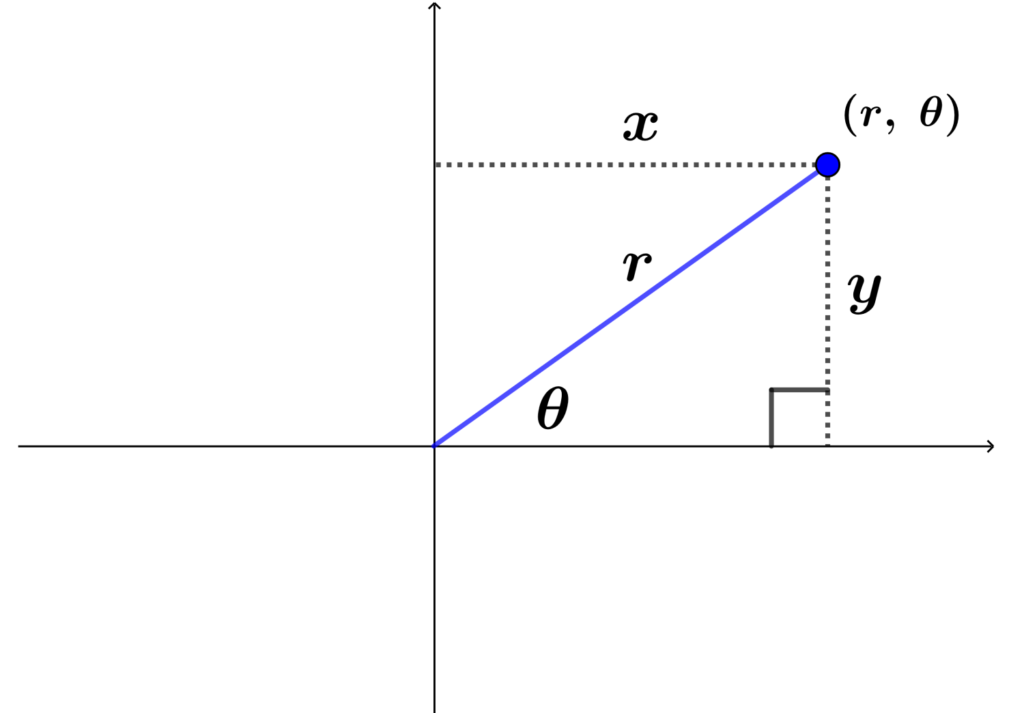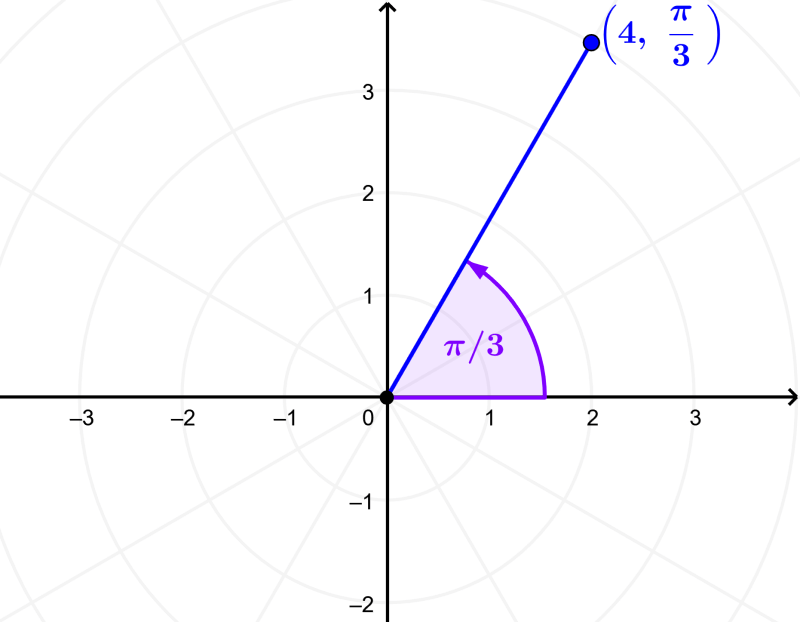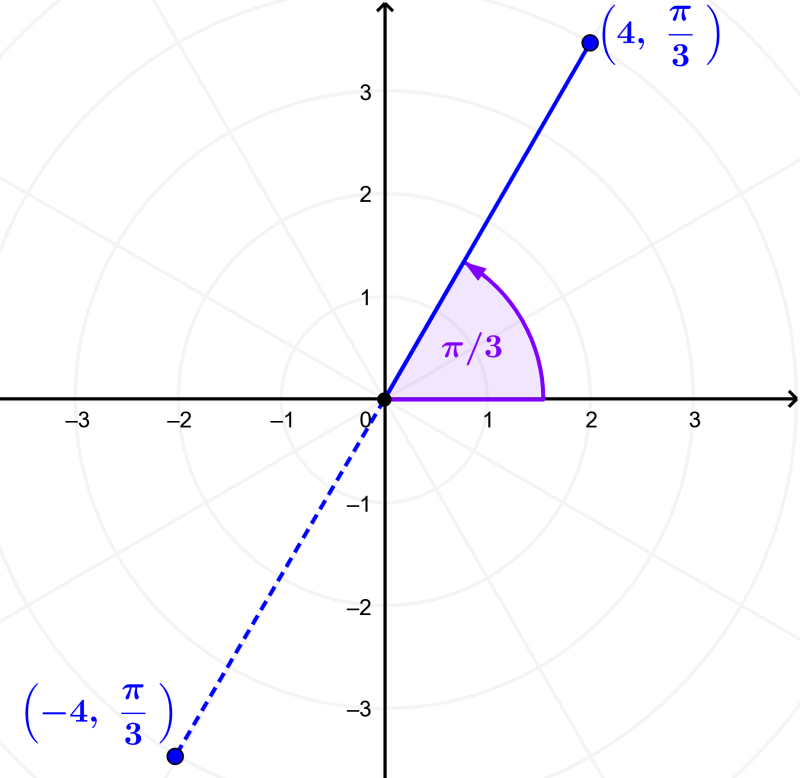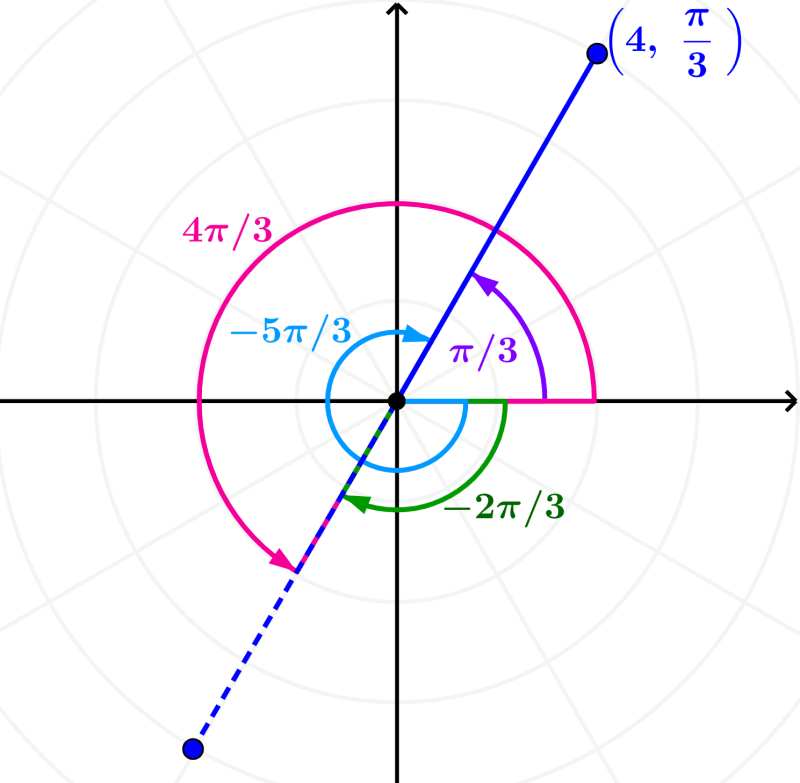Coordinate systems are simply ways to define a point in space. The Cartesian coordinate system, which has the form (x, y), is the most widely used coordinate system. However, it is not always the most convenient coordinate system. An alternate system is the polar coordinate system, which has the form (r, θ). In this system, r represents the distance from the origin to the point and θ represents the angle formed with respect to the x-axis.
Here, we will learn how to use this coordinate system. Also, we will learn how to convert from Cartesian to polar coordinates and vice versa.
What are polar coordinates?
Polar coordinates are an alternate coordinate system to the Cartesian system. Polar coordinates have the form (r, θ), where r is the distance from the origin to the point and θ is the angle formed with respect to the x-axis.

This coordinate system may be more convenient when calculating the equations of motion for various mechanical systems. Many times we have objects that move in circular motion and the use of polar coordinates can simplify the equations used.
Examples of polar coordinates
A point in polar coordinates can be graphed by measuring the distance from the origin and measuring the angle from the x-axis. The diagram below represents the point $latex (4, \frac{\pi}{3})$.

The value of r can be both positive and negative. For example, below we have the graph of the points $latex (4, \frac{\pi}{3})$ and $latex (-4, \frac{\pi}{3})$.

We can see that if r is positive, the point is located in the same quadrant as the angle. On the other hand, if r is negative, the point is in the quadrant opposite the angle.
An important difference between Cartesian coordinates and polar coordinates is that, in Cartesian coordinates, there is only one set of coordinates for each point.
On the other hand, in polar coordinates, there is an infinite number of coordinates for each point. If we add or subtract 2π, we get an equivalent angle. For example, the following coordinates represent the same point:
$$(4, \frac{\pi}{3})=(4, -\frac{5\pi}{3})=(-4, \frac{4\pi}{3})=(-4, -\frac{2\pi}{3})$$

Polar to Cartesian conversion formulas
We can obtain the polar to Cartesian conversion formulas using the following diagram:

Using the diagram, we can easily see that the x component is found using the cosine of the angle and the y component is found using the sine of the angle:
| $latex x=r~\cos(\theta)$ $latex y=r~\sin(\theta)$ |
EXAMPLE 1
We have the polar coordinates $latex (6, \frac{2 \pi}{3})$. What is its equivalent in Cartesian coordinates?
Solution
We have the values $latex r=6, ~\theta=\frac{2\pi}{3}$. Using these values along with the conversion formulas, we have:
$latex x=6 \cos(\frac{2\pi}{3})$
$latex x=-3$
$latex y=6 \sin(\frac{2\pi}{3})$
$latex y=5.2$
The Cartesian coordinates are (-3, 5.2).
EXAMPLE 2
If we have the polar coordinates (5, $latex \frac{5 \pi}{4}$), what is its equivalent in Cartesian coordinates?
Solution
We recognize the values $latex r=5, ~\theta=\frac{5\pi}{4}$. We have to find the values of x and y using these values and the formulas given above:
$latex x=5 \cos(\frac{5\pi}{4})$
$latex x=-3.54$
$latex y=5 \sin(\frac{5\pi}{4})$
$latex y=3.54$
The Cartesian coordinates are (-3.54, 3.54).
Cartesian to Polar conversion Formulas
We are going to use the same diagram to obtain the Cartesian to polar conversion formulas:

Using the right triangle, we can see that r is equal to the hypotenuse and x, and are the legs. Therefore, we can use the Pythagorean theorem to find the value of r:
$latex {{r}^2}={{x}^2}+{{y}^2}$
| $latex r=\sqrt{{{x}^2}+{{y}^2}}$ |
We find the angle θ using the inverse tangent. The tangent of an angle is equal to the opposite side divided by the adjacent side. In this case, the opposite side is y and the adjacent side is x. Therefore, we have:
| $latex \theta=\tan^{-1}(\frac{y}{x})$ |
We must be careful with the angle since the inverse tangent has a range from $latex – \frac{\pi}{2}$ to $latex \frac{\pi}{2}$. Due to this, the calculator may give us an incorrect value.
To correct this, we add 180° or π if the point is in the second and third quadrants and we add 360° or 2π if the point is in the fourth quadrant. If the point is in the first quadrant, we simply use the angle given by the calculator.
EXAMPLE 1
If we have the point (3, 5) in Cartesian coordinates, what are its polar coordinates?
Solution
We have the values $latex x=3,~y=5$. We use these values in conjunction with the conversion formulas to obtain the values of r and of θ. Therefore, the value of r is:
$latex r=\sqrt{{{x}^2}+{{y}^2}}$
$latex r=\sqrt{{{3}^2}+{{5}^2}}$
$latex r=\sqrt{9+25}$
$latex r=\sqrt{34}$
$latex r=5.83$
The angle θ is:
$latex \theta={{\tan}^{-1}}(\frac{y}{x})$
$latex \theta={{\tan}^{-1}}(\frac{5}{3})$
$latex \theta=1.03$ rad
The coordinates of the point are (5.83, 1.03 rad).
EXAMPLE 2
We have the point (-2, -6) in Cartesian coordinates. What is its polar coordinate equivalence?
Solution
We recognize the values $latex x=-2,~y=-6$. We find the values of r and of θ using the formulas given above. Therefore, the value of r is:
$latex r=\sqrt{{{x}^2}+{{y}^2}}$
$latex r=\sqrt{{{(-2)}^2}+{{(-6)}^2}}$
$latex r=\sqrt{4+36}$
$latex r=\sqrt{40}$
$latex r=6.32$
The angle θ is:
$latex \theta={{\tan}^{-1}}(\frac{y}{x})$
$latex \theta={{\tan}^{-1}}(\frac{-6}{-2})$
$latex \theta=1.25$ rad
In this case, the x component and the y component are negative, so the point is in the third quadrant. This means that we have to add π to the given angle. Therefore, the correct angle is $latex \theta=1.25+\pi=4.39$ rad.
The coordinates of the point are (6.32, 4.39 rad).
See also
Interested in learning more about polar coordinates? Take a look at these pages:



